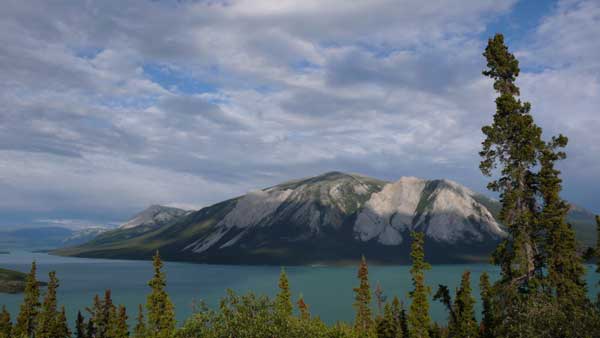The Yukon is a vast territory in northwest Canada with a small population and a rich complement of natural resources, from minerals to fossil fuels, wildlife to water. It is also a fascinating case study for Indigenous self-government and sustainable resource management.
In 2014, I undertook research to learn about Indigenous self-government in the Yukon. In the process, I learned that in Indigenous communities, sustainability can be an all-encompassing framework that must incorporate fiscal viability, environmental integrity, and social concerns. What can we learn from the frontlines of this approach?

The Yukon has been home to Indigenous peoples for at least 10,000 years. This remote north-west corner of Canada was not settled by Europeans until the Klondike Gold Rush in 1897. Its population today is about 40,000 people, one quarter of whom are of Indigenous ancestry. No historical treaties were signed between Indigenous peoples and colonial powers, but in the 1970s a group of Yukon First Nations began advocating for an agreement with the territorial and federal governments.
The Umbrella Final Agreement (UFA), a landmark piece of legislation, was signed in 1990 between three levels of government: Yukon First Nations, the Yukon government, and Canada. It set the stage for the Yukon’s 14 First Nations to negotiate their own tripartite Final Agreements. By 2005, most had done so; only 4 remained under Canada’s paternalistic, outdated Indian Act, a statute passed in 1876. These new agreements devolve significant power to First Nations and also determine usage rights for traditional territories.
Putting it into practice
Interviews with First Nations lands and leadership teams revealed the challenges of putting what was good on paper into practice by successfully implementing this progressive legislation. Despite some good relationships with practitioner-level government representatives, some participants said “our voices get lost in the journey up to cabinet” and that “industry calls all the shots” in the Yukon’s government. A central problem is that the parties come from “Different places, different values.” With clashing values comes conflict.
Most participants reported good working relationships, both within and among First Nations, but this changed beyond the Indigenous sphere. When asked about dispute resolution mechanisms between Indigenous and non-Indigenous governments, one participant replied: “The Court of Canada. It’s the only one that seems to be working!” That’s not a good sign.
One major conflict is the Peel Watershed land use planning case. A lengthy planning process recommended 80% protection of the vast, pristine Peel Watershed. Conflict occurred when the Yukon government overruled this recommendation and consulted on a different plan, with only 30% protection. Respectful land use planning is a priority for First Nations, but I heard that it “is written out in a certain way in the UFA, and it was carried out, and then it was completely nixed by a government that wanted an appearance of consultation but didn’t really. They still want to have control.”
The government’s centralized, controlling mindset maintains the power imbalance that is part of Canada’s colonial legacy. From a First Nations perspective, the government is not respecting the spirit of the UFA. Governments must share meaningful power to up aim to make real progress towards the UFA’s goals.
Yet the UFA has also brought benefits, including grassroots decision-making within First Nations communities, representation on local councils and territorial boards, and a better ability to weigh development options. One representative described how the Indian Act “was very limiting in terms of our decision-making”, but now policies are developed in a “grassroots” process, “by the people, for the people.” This new governance style is better able to deal with local dynamics than a distant bureaucracy.
Representation is another benefit. Many territorial and local resource management boards now include mandated Indigenous representation. This guaranteed representation was highly valued by the people I spoke with, and ensures that Traditional Knowledge is incorporated into decision-making. Within First Nations, self-government has spurred the development of community trust funds, civic education initiatives, and economic development campaigns (read about one First Nation’s initiative here).
First Nations are now better able to weigh the development options available to them, from mining to eco-tourism. In the microcosm of a First Nation community, projects must be viable on all fronts. One First Nation has a governmental priority to ensure both environmental and cultural sustainability, along with benefits to the community, before investing in any new projects. This is a great example of how sustainability is a normative, political concept that should involve human wellbeing and social equity as well as environmental integrity. In the words of one participant: “We need something that’s gonna last.”
This all-encompassing approach to sustainability is frank about the need for economic viability, while staying true to deeper values. Wrestling with difficult decisions to sustain both life and land, Yukon First Nations offer a valuable example for others pursuing sustainability on this planet.
Julia Duchesne has an MSc in Environmental Change and Management from the University of Oxford. She is currently working as the Outreach & Communications Manager at the Yukon Conservation Society, a grassroots environmental organisation in the Yukon.